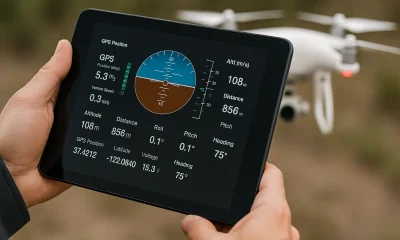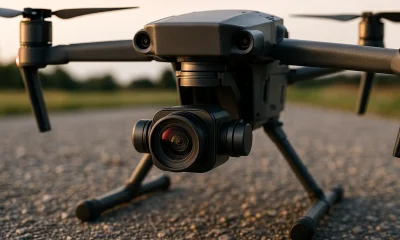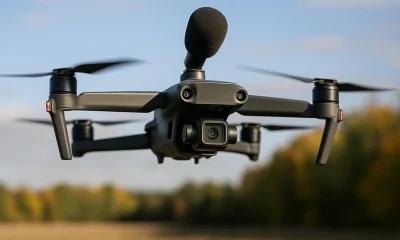- Acronym Guide
- AAM
- ABS
- AC
- ACAS
- ADS-B
- AEHF
- AFAC
- AGL
- AI
- AIM
- ALPA
- ALS
- AM
- AMA
- ANSP
- AOI
- APPI
- AUV
- AUVSI
- ARPAS-UK
- ASTM
- ATC
- BVLOS
- CAA
- CAAC
- CAB
- CAP
- CASA
- CATT
- CBO
- CBR
- CBRN
- CDMA
- CDR
- CFI
- CFR
- CIR
- COA
- COMINT
- CORS
- COTP
- COTR
- CPTED
- CV
- C2
- DAA
- DAS
- DEM
- DFI
- DFS
- DGCA
- DHS
- DOD
- DPA
- DPEs
- DRG
- DRO
- DSM
- DSMX
- DSP
- DSSS
- DTM
- EASA
- EFT
- EO
- EOD
- EO/IR
- ELINT
- EMI
- ESC
- EVLOS
- eVTOLs
- FAA
- FCC
- FCS
- FHSS
- FICCI
- FLIR
- FOB
- FOV
- FPS
- FPV
- GBDAA
- GCP
- GCS
- GDPR
- GML
- GNSS
- GPS
- GSD
- GVC
- HDR
- HOGE
- IACRA
- ICAO
- ICS
- IMU
- INS
- IR
- ISA
- ISR
- ITU
- JARUS
- LAAMS
- LAANC
- LAATM
- LAI
- LAS
- LBA
- LIDAR
- LOS
- LSALT
- MAC
- MAVLink
- MLIT
- MMS
- MSL
- MTOM
- NDAA
- NCSL
- NFZ
- NIST
- NMEA
- NOTAM
- NPA
- NPRM
- NTIA
- OBIA
- OEM
- OFDM
- OGI
- OOP
- PAS
- PASM
- PAV
- PCV
- PdM
- PEC
- PIC
- PID
- PIPL
- PLD
- PM
- PN
- PPK
- PPS
- PSM
- PTZ
- PWM
- UAM
- UAOP
- UAS
- UASTM
- UAV
- UCAVs
- UHD
- UHF
- USV
- UTM
- RAIM
- RCC
- RCS
- RFI
- ReOC
- RePL
- RMS
- ROI
- RPAS
- RPC
- RTH
- RTN
- RTK
- SaR
- SAR
- SARP
- SBAS
- S.Bus
- SBIR
- SEDENA
- SfM
- SFOC
- SIGINT
- SLAM
- SMS
- SOP
- SORA
- STANAG
- STTR
- STK
- sUAS
- TCAS
- TCCA
- TFR
- TIN
- TLM
- TOF
- TP
- TPS
- TSA
- VHF
- VLOS
- VTOL
Drone Acronyms
What is ICS (Incident Command System) & How Does it Work?
By
Jacob StonerTable Of Contents

Definition
ICS, or Incident Command System, is a standardized approach to the command, control, and coordination of emergency response. It provides a clear structure for organizing personnel, resources, and communications during incidents such as natural disasters, accidents, or large public events. In drone operations, ICS defines how drones are integrated into the broader emergency response, ensuring that aerial data collection supports overall incident management effectively.
Usage
ICS is used by emergency services, public safety agencies, and private sector partners during coordinated responses. Drones operating within an Incident Command System framework might be tasked with mapping disaster zones, conducting search and rescue, assessing damage, or providing situational awareness, all under the direction of an established command structure.
Relevance to the Industry
Incorporating drones into the Incident Command System ensures that aerial operations are safe, legal, and harmonized with ground efforts. This coordination prevents airspace conflicts, ensures data is shared efficiently with decision-makers, and helps meet compliance requirements for emergency services. As drone use grows in public safety, understanding ICS becomes critical for pilots supporting disaster response or large-scale operations.
How Does ICS (Incident Command System) Work?
The Incident Command System works by providing a clear, scalable, and standardized framework that organizes personnel, resources, and communications during an emergency or planned event. When drones are involved, ICS ensures that aerial operations support the larger incident objectives safely and efficiently. Here’s how ICS functions step by step:
Establishment of Command Structure
As soon as an incident is identified, an Incident Commander is assigned. The Incident Commander defines the incident objectives and manages overall operations. Key roles are filled across sections such as Operations, Planning, Logistics, and Finance/Administration, with flexibility to expand or contract based on the incident’s complexity.
Integration of Drone Operations
Drone teams are typically assigned under the Air Operations Branch (if established) or the Operations Section. They receive missions aligned with incident priorities, such as conducting damage assessments, providing real-time video feeds, mapping hazardous zones, or assisting search and rescue operations.
Assignment of Roles and Responsibilities
Within ICS, every participant—including drone pilots—has a clearly defined role:
Pilots in Command (PICs) are responsible for flight safety.
Visual Observers (VOs) assist in maintaining situational awareness.
Airspace coordination ensures safe integration with manned aircraft if present.
Communication and Reporting Protocols
All drone operations follow standardized communication channels established in the Incident Action Plan (IAP). Regular situation reports (SITREPs), mission briefings, and check-ins are required to maintain coordinated operations and airspace deconfliction.
Data Collection and Delivery
Drone teams collect aerial imagery, thermal data, 3D maps, or live video feeds and quickly deliver actionable intelligence to incident commanders and field crews. This information feeds into Planning and Operations to update strategies in real time.
Documentation and Accountability
Every flight, resource assignment, and data capture is documented within the ICS framework. This supports post-incident analysis, compliance reporting, and lessons-learned reviews.
By ensuring everyone—from ground teams to aerial operators—follows the same operational structure, ICS brings order and efficiency to what might otherwise be chaotic situations, dramatically improving the speed and quality of response during emergencies.
Example in Use
“Under the Incident Command System, the drone team was assigned to conduct aerial damage assessments and relay live video back to the operations center.”
Frequently Asked Questions about ICS (Incident Command System)
How does ICS relate to drone operations during emergencies?
Answer:
ICS assigns roles to all participants, including drone operators.
Drone pilots may report to an Air Operations Branch or Planning Section.
Flight missions are integrated into the incident’s objectives and communication protocols.
What are the key components of ICS?
Answer:
Command: Leadership for the overall incident.
Operations: Tactical response activities (where drones often fit).
Planning: Information collection and dissemination.
Logistics: Resource acquisition and support.
Finance/Administration: Tracking costs and legal compliance.
Do drone pilots need special training to operate under ICS?
Answer:
While not mandatory everywhere, specialized training such as FEMA ICS-100 and ICS-200 is highly recommended.
Some agencies require ICS certification for contractors or volunteers operating drones during incidents.
For examples of these acronyms visit our Industries page.
As the CEO of Flyeye.io, Jacob Stoner spearheads the company's operations with his extensive expertise in the drone industry. He is a licensed commercial drone operator in Canada, where he frequently conducts drone inspections. Jacob is a highly respected figure within his local drone community, where he indulges his passion for videography during his leisure time. Above all, Jacob's keen interest lies in the potential societal impact of drone technology advancements.
Pros
Cons
You may like


What is ALPA (Air Line Pilots Association) & How Does it Work?


What is AEHF (Advanced Extremely High Frequency)?


What is TLM (Telemetry) & How Does it Work?


What is PTZ (Pan-Tilt-Zoom) & How Does it Work?


What is PAS (Passive Acoustic Sensor) & How Does it Work?


What is OGI (Optical Gas Imaging) & How Does it Work?